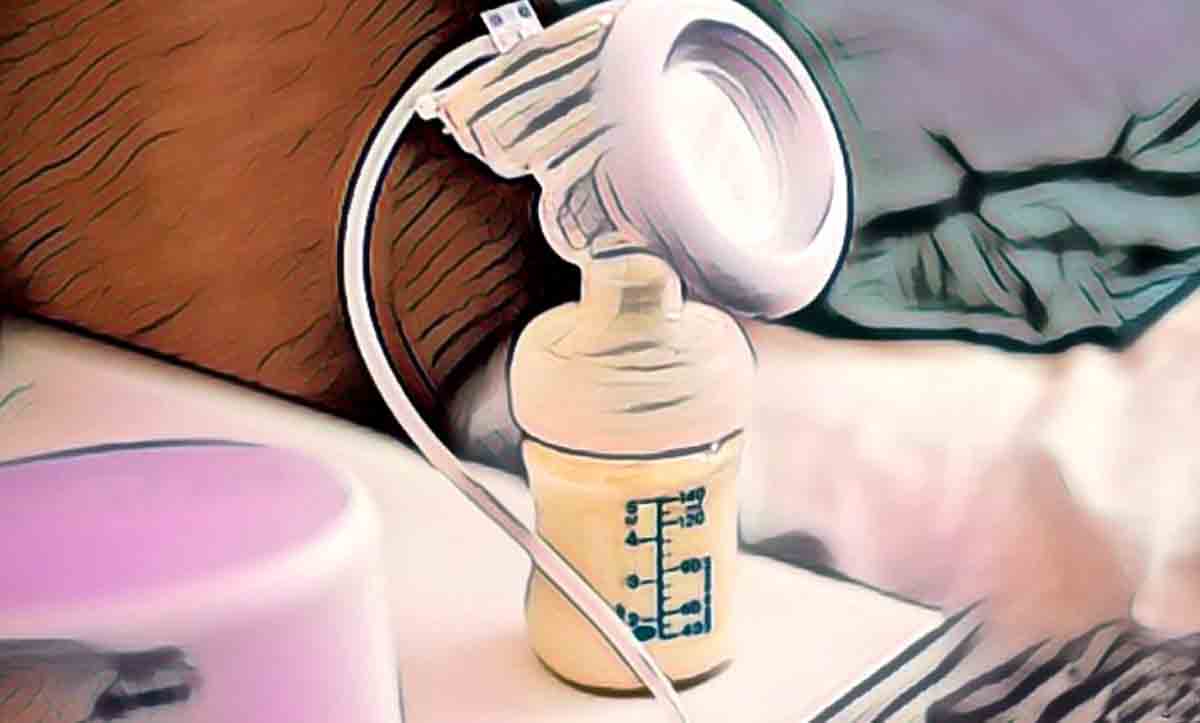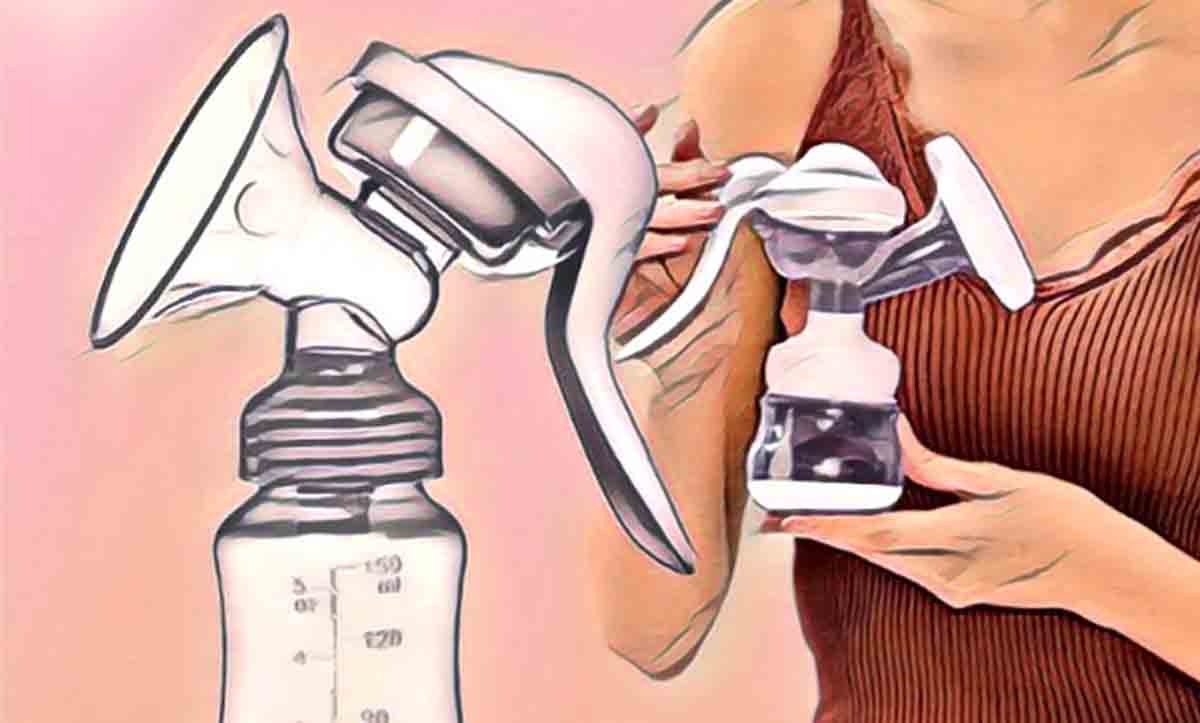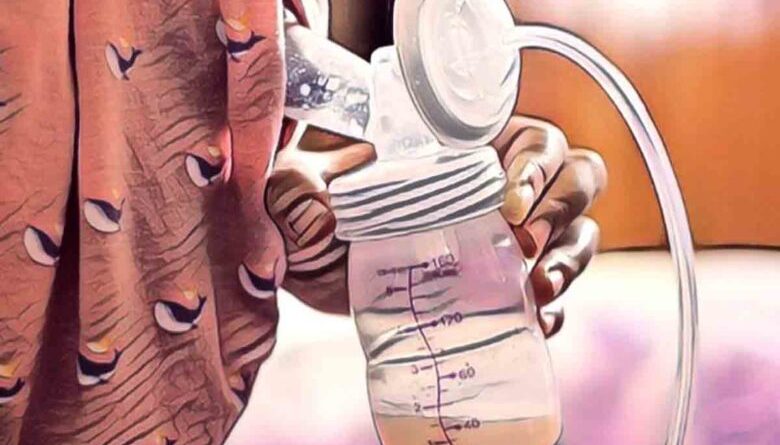10 Side Effects of Breast Pumps No One Has Told You
The breast pump has made the life of mothers around the world easier. The convenience of pumping breast milk out and storing it for later use has allowed new mothers to return to work sooner and continue to provide breast milk to their babies.
However, using a breast pump (breast pump, breastfeeding pump) has some side effects that many mothers are not aware of. This article explains what are the side effects of using a breast pump.
Benefits of Breast Pump
Breast pumps have many benefits for mothers and babies. It is also a great option for mothers who cannot breastfeed for various reasons, to continue breastfeeding and avoid switching to formula. Here are some of the benefits of breast pumps.
 breastfeeding pump benefits
breastfeeding pump benefits1. Allows Regulated Feeding
Mothers or caregivers can set a schedule for feeding the baby and have more control over the timing of breastfeeding. This makes the pumping and feeding schedule more organized and frees up some of the mother’s time.
2. Relieves Working or Busy Moms
Working mothers can pump milk before leaving, and caregivers can bottle-feed baby throughout the day. Breast pumps also give moms some time to run errands, meet friends, or pamper themselves.
3. Helps Increase Breast Milk
Pumping after breastfeeding can help increase milk production. Alternatively, keeping milk readily available helps under-supplied mothers to feed their children.
4. Works in Medical Conditions
If you or your baby has any health issues that prevent breastfeeding, pumping and bottle feeding can help a lot.
What Are the Side Effects of Breast Pumps?
Although breast pumps allow mothers to breastfeed their babies even when they are not around, there are some side effects and disadvantages that new mothers should be aware of. Some of the side effects of using a breast pump are:

1. May Reduce Milk Supply
One of the side effects of constantly pumping breast milk is reduced milk supply. The system of the breast pump is very different from the way a newborn baby grasps and sucks on your nipple. Breastfeeding is what stimulates more milk production in your body. A if the baby is not allowed to breastfeed, milk production decreases.
2. Freezing Depletes the Nutrients of Breast Milk
When the baby is fed directly from the mother, it receives all the nutrients necessary for healthy growth. breast milk freezing for more than three months, solving and reheatingcauses depletion of vital nutrients in breast milk.
3. Breast Pumps Can Cause Nipple and Breast Tissue Damage
Breast pumps can damage nipples and breast tissue. Incorrect setting can cause excruciating pain during pumping. Since pumping by hand is laborious and tiring, manual pumpscan cause pain in both the breasts and the mother’s hands.
 breast pump harms
breast pump harms4. Both Bottle and Breast Feeding Confuses Babies
If you always switch bottle in the middle of breastfeeding, this can confuse the baby. This is due to the difference in the suction arrangement in both cases. The baby may suckle more on the mother’s nipples, as with the bottle. This can also cause sore nipples in the mother. This can also happen because the baby is accustomed to bottle feeding with a rubber breast, and the baby may not be able to actually grasp it while feeding directly.
5. May Cause Painful Bleeding and Much Relief
One of the side effects of the electric breast pump This is because mothers pump too much to be able to store a large amount of material for later use. This causes too many hormones to be released in the body, which to swelling of the breasts and causes it to fill with too much milk. This blood rushand can be very painful for the mother.
6. Does not replace the Attachment Respite from Direct Breastfeeding
Direct breastfeeding creates a close bond between baby and mother that cannot replace bottle feeding. Holding the baby in your lap and feeling him suckle from your breast creates an emotional attachment that bottle feeding does not.
7. It is the Cycle of Repetitive Washing and Sterilization of Bottles
One disadvantage of using breast pumps is that all parts of the pump, bottles, and pacifiers are cleaned before and after each use. washing thoroughlyand sterilized is necessary to be done. Another problem is that mothers can’t find a private place to pump when they’re outside of their homes. They may also not be able to find a place to safely store their pumped breast milk.
8. Food Contamination Hazard
No matter how well you clean and sterilize everything, there are parts of pumps and valves that are hard to reach, where mold and bacteria can accumulate. bacteriaand fungi find nutrient-rich breast milk an ideal environment to grow and multiply. May contaminate breast milkand they may cause the baby to become ill.
9. Bottle-Feeding Causes Baby’s Teeth to Decay
Bottle feeding can cause tooth decay in the long run. When a baby breastfeeds, the milk does not reach the baby’s teeth as the mother’s nipple falls behind the baby’s teeth. While bottle-fed, the baby often falls asleep with the bottle in his mouth, causing the milk to coat the teeth. This is prolonged exposure to tooth decay why could it be. If the decay has progressed, the tooth may need to be closed or removed by a dentist.
10. Delays Maternal Smoothing After Childbirth
When a mother breastfeeds her baby directly, oxytocin hormone released into your body. Oxytocin causes a contraction in the uterus, reducing postpartum bleeding. Breastfeeding also helps the size of the uterus return to normal much faster. Studies have shown that the uterus of a nursing mother returns to its usual size six weeks after birth, while it takes ten weeks for the uterus to return to its usual size in a non-breastfeeding mother.
 milk pump damages
milk pump damagesHow to Avoid the Side Effects of Using a Breast Pump?
Here are a few tips you can follow to avoid some of the side effects of using a breast pump:
1. Consult Your Physician
Talk to your doctor before using a breast pump. Follow your doctor’s recommendations about breastfeeding. He or she can guide you on how to make the most of an adequate supply of breast milk when using a breast pump.
2. Breastfeed Your Child
your child at least first six months Breastfeed directly throughout. Feed the child as directly as possible. Holding the baby close and feeding him directly increases the hormone oxytocin in your body. This hormone is responsible for the draining effect that causes milk to be released from your body. The higher the level of oxytocin in the body, the stronger the draining effect will be.
3. Replace Old Pumps
Breast pumps should be changed every eight to ten months to ensure the baby is getting uncontaminated, nutritious breast milk. Old breast pumps can develop mold on valves or inaccessible folds that cannot be cleaned completely. This can contaminate breast milk and cause the baby to become ill. Old pumps may not work as effectively as new ones. The pumping mechanism may become inefficient over time, resulting in less breast milk production.
4. Use an Automatic Pump
Use an electric or automatic breast pump instead of a manual pump. The constant use of a manual pump will deplete the breast milk supply. Because of this, your baby will not be able to get enough milk. A manual pump also tires your hands, as milk must be pumped mechanically with your hands.
Breast pumps have given working mothers a way to ensure their babies are breastfed even when they are not around. Many mothers also use pumps to express milk so another person can take turns to feed the baby. This gives them time to rest or take a much-needed nap. However, there are many disadvantages to using a breast pump, such as those listed in this article. To avoid the side effects of using a breast pump, mothers should try to breastfeed their child as directly as possible. They should also talk to a lactation consultant before using a breast pump and decide whether to use a breast pump after carefully considering all the pros and cons.




